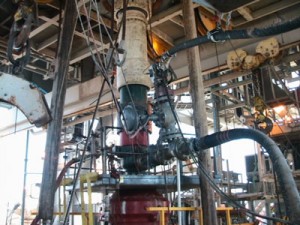To MPD or not to MPD?

To MPD or not to MPD? That is the question posed not by Hamlet but by George Medley, Signa Engineering. In “MPD Candidate Identification: To MPD or Not to MPD,” presented at the 2010 SPE/IADC Managed Pressure Drilling & Underbalanced Operations Conference, Mr Medley detailed a model developed as part of a research project at Texas A&M University (TAMU). One of his co-authors is TAMU’s Dr Jerome Schubert.
The candidate selection model seeks to identify critical steps in the process and provides the theory on MPD. Further, Mr Medley said, it provides guided options and helps determine candidacy using hydraulic analysis.
MPD, Mr Medley said, is a virtual godsend to the industry, when properly applied.
“It’s filled a real gap in the technology that has allowed us to drill wells that were undrilled and to improve performance on wells that were drillable,” he remarked.
To begin the process, Mr Medley recommended defining objectives and collecting a variety of data – on wells, geology, equipment and design. He urged that drilling problems be understood relative to the objectives. Finally, learn the variations on the theme of MPD because there are several different types.
The candidate selection software draws from several databases of MPD wells drilled. The first, developed by Signa, breaks the MPD well data down by MPD variation, i.e., constant bottomhole pressure, dual gradient, pressure mud cap control drilling and so on. At Balance with Smith developed a second database that details wells by rig type. Finally, the database from Secure Drilling (now part of Weatherford International) also analyzes rig type, as well as project type (development, exploratory, HP, HPHT, etc).




